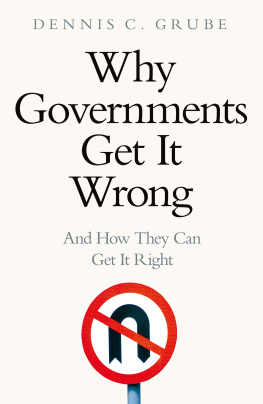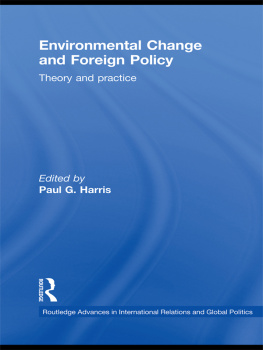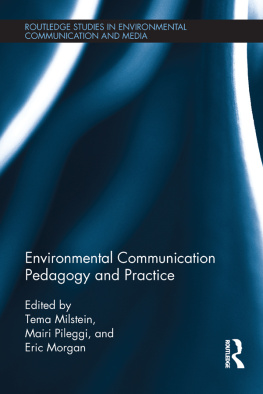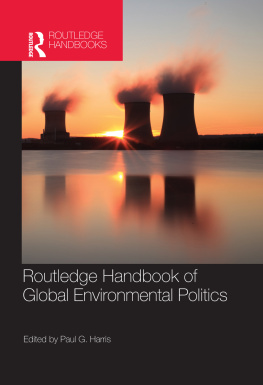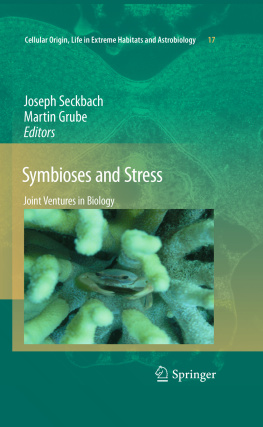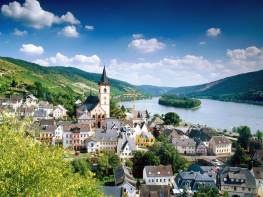MODELLING ECOLOGICAL CHANGE
MODELLING ECOLOGICAL CHANGE
Perspectives from Neoecology, Palaeoecology and Environmental Archaeology
edited by | David R. Harris
Kenneth D. Thomas |
University College London Institute of Archaeology Publications, Vol. 15
Originally published by University College London Institute of Archaeology
First published 2009 by Left Coast Press, Inc.
Published 2016 by Routledge
2 Park Square, Milton Park, Abingdon, Oxon OX14 4RN
711 Third Avenue, New York, NY 10017, USA
Routledge is an imprint of the Taylor & Francis Group, an informa business
Copyright 1991 The Institute of Archaeology
All rights reserved. No part of this book may be reprinted or reproduced or utilised in any form or by any electronic, mechanical, or other means, now known or hereafter invented, including photocopying and recording, or in any information storage or retrieval system, without permission in writing from the publishers.
Notice:
Product or corporate names may be trademarks or registered trademarks, and are used only for identification and explanation without intent to infringe.
Library of Congress Cataloguing-in-Publication Data available from the publisher
ISBN 13: 978-0-905853-28-4 (pbk)
Contents
John H.R. Gee and Paul S. Giller
Keith Barber
Hansjrg Kster
Gordon Hillman
Richard Bradshaw
Kevin J. Edwards
Kevin J. Edwards
John G. Evans
David R. Harris and Kenneth D. Thomas
Keith E. Barber, Department of Geography, University of Southhampton, U.K.
Richard H.W. Bradshaw, Department of Landscape Planning, Swedish University of Agricultural Sciences, Alnarp, Sweden.
Kevin J. Edwards, School of Geography, University of Birmingham, U.K.
John G. Evans, School of History and Archaeology, University of Wales, Cardiff, U.K.
John H.R. Gee, School of Biological Sciences, University College of Wales, Aberystwyth, U.K.
Paul S. Giller, Department of Zoology, University College Cork, Ireland.
David R. Harris, Institute of Archaeology, University College London, U.K.
Gordon C. Hillman, Institute of Archaeology, University College London, U.K.
Hansjrg Kster, Institute of Early Vegetation History, University of Munich, Germany.
Kenneth D. Thomas, Institute of Archaeology, University College London, U.K.
When we and our colleagues in London planned the programme for the Tenth Anniversary Conference of the Association for Environmental Archaeology, one of our central aims was to focus discussion on the conceptual and methodological links actual and potential between environmental archaeology and some of its most closely related disciplines. This volume reflects that aim by comparing the concepts and methods of neoecology, palaeoecology and environmental archaeology. It does so selectively rather than comprehensively, through the papers contributed by five lead speakers at the Conference who represented, to differing degrees, the three disciplinary viewpoints.
The volume begins with a critique by Gee and Giller of how the concepts and methods of neoecology relate to palaeoecology and environmental archaeology. The phytosociological approach to the analysis of present-day vegetation is then described, in the second main paper, by Kster, who also discusses the applicability of phytosociology to archaeobotany. In the third major contribution, Bradshaw brings a palaeoecological perspective to bear on the theme of modelling ecological change by examining, with particular reference to Irish data, the capacity of pollen analysis to sense past vegetation at a range of spatial scales. This is followed by Edwards discussion from a palaeoecological and archaeological viewpoint of the value of off-site data in cultural palynology; and in the penultimate paper Evans develops and exemplifies a methodology by which environmental archaeologists may make more secure inferences about the nature of past environments from land-molluscan evidence.
Interspersed among these five papers are three contributions by discussants who participated in the session on Modelling Ecological Change at the Conference. Thus, following Gee and Gillers paper, Barber briefly debates the relationship between palaeoecology and neoecology, and the contribution which the former can make to the development of general ecological theory; following Ksters paper, Hillman argues that phytosociological concepts must be used with great caution in archaeobotany; and after Bradshaws paper Edwards comments further on the role of spatial scale in palynology.
Finally, in the last paper, the editors offer some thoughts of their own on the overall theme of the book. We wish to thank all those colleagues who participated in the Conference, especially those whose contributions make up this volume, and to offer to the latter editorial apologies for the (unavoidable) length of time that has elapsed between the meeting and the publication of their papers.
David Harris and Ken Thomas
Institute of Archaeology, University College London
June 1991
John H.R. Gee and Paul S. Giller
Death and the passage of time transform living ecological communities into the assemblages which are exhumed by palaeoecologists and archaeologists. The analysis of these remains provides the best, and often the only, indication of the composition of the original community. A sequence of death assemblages recovered from different depths in the sediment may also reveal the pattern of temporal development of the local community, providing that the factors influencing the accumulation of material remained constant over that period. Single-frame shots of the palaeocommunity can thus be run in sequence to produce a moving record, for as long as the camera kept turning. Palaeoecological information of this sort is being used increasingly to deduce conditions in the local palaeoenvironment and to help in the interpretation of short-term events in human history. This paper considers these developments in the use of death assemblages by environmental archaeologists from the point of view of ecologists concerned with extant communities (neoecologists).
The reliability of information from death assemblages
We can define the community as a group of organisms, generally of wide taxonomic affinities, occurring together at the same place and time, many of which will interact within a framework of horizontal (competitive) and vertical (trophic) linkages (Giller & Gee 1987). The fidelity of the translation from a living community to the remains buried at a particular site and stratigraphie level is clearly of paramount importance.
Community composition
Representation of the original species composition of the local community will depend on: a) the probability of incorporation of corpses into sediments and the persistence of the remains in identifiable form, both of which vary with species identity and sedimentary conditions; b) the effects of disturbance on the reliability of the stratigraphy, and the extent of the input of allochthonous material (


